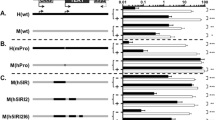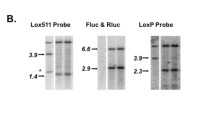Abstract
Telomerase is known to maintain the telomere by avoiding the shortening of the telomere which normally occurs during end replication, thus granting immortality to cancer cells and stem cells. Telomerase activity is thought to be regulated mainly at the transcriptional level. Furthermore, the telomerase regulation mechanism is reported to be markedly different between human and mouse. Particularly, telomerase has been shown not to be expressed in normal human tissues, but abundant expression has been shown to be expressed in all mouse tissues except in brain and muscle tissue.
By using various deletion mutants of mouse telomerase reverse transcriptase (mTERT) promoter in promoter assay, we obtained result that −200 to −178 bp from the translational start site confers a strong transcriptional activity in mTERT promoter, where NF-AT and v-Myb are expected to bind. Although v-Myb could not activate the promoter, NF-AT member proteins, especially NF-AT5 could activate the 5 tandem repeat of −200 to −178 fused to luciferase gene (mTERT-EE). Furthermore, dominant negative mutants of NF-AT5 repressed promoter activity of mTERT-EE. These results demonstrate that NF-AT5 activates the mTERT promoter activity via binding to −200 to −178 region, which might confers the ubiquitous expression of mTERT.
Access this chapter
Tax calculation will be finalised at checkout
Purchases are for personal use only
Preview
Unable to display preview. Download preview PDF.
Similar content being viewed by others
References
Lopez-Rodriguez, C. Aramuburu, J. Rankeman, AS. and Rao A (1999) NFAT5, a constitutively nuclear NFAT protein that does not cooperate with Fos and Jun, Proc. Natl. Acad. Sci. USA., 96, 7214–7219.
Schreiber, S. L. Crabtree, GR. (1992) The mechanism of action of cyclosporinA and FK506, Immunol, Today 13, 136–142.
Author information
Authors and Affiliations
Editor information
Editors and Affiliations
Rights and permissions
Copyright information
© 2003 Springer Science+Business Media Dordrecht
About this paper
Cite this paper
Fujiki, T., Katakura, Y., Miura, T., Kotake, Y., Yoshizaki, K., Shirahata, S. (2003). Transcriptional Regulation Mechanisms of Telomerase Reverse Transcriptase Gene Responsible for Ubiquitous Expression of Telomerase in Mouse. In: Yagasaki, K., Miura, Y., Hatori, M., Nomura, Y. (eds) Animal Cell Technology: Basic & Applied Aspects. Animal Cell Technology: Basic & Applied Aspects, vol 13. Springer, Dordrecht. https://doi.org/10.1007/978-94-017-0726-8_57
Download citation
DOI: https://doi.org/10.1007/978-94-017-0726-8_57
Publisher Name: Springer, Dordrecht
Print ISBN: 978-90-481-6557-5
Online ISBN: 978-94-017-0726-8
eBook Packages: Springer Book Archive




